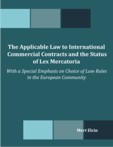Add abstract
Want to add your dissertation abstract to this database? It only takes a minute!
Search abstract
Search for abstracts by subject, author or institution
Want to add your dissertation abstract to this database? It only takes a minute!
Search for abstracts by subject, author or institution
by Reid Erec Gustafson
| Institution: | University of Maryland |
|---|---|
| Department: | History |
| Degree: | |
| Year: | 2014 |
| Keywords: | |
| Posted: | |
| Record ID: | 2026508 |
| Full text PDF: | http://hdl.handle.net/1903/15520 |
This dissertation examines how Mexico City workers, workers' families, state officials, unions, employers, and others perceived, performed, and shaped masculinity during the period of the Mexican Revolution. I argue that Mexico City's workers, officials, and employers negotiated working-class gender beliefs in such a way as to express multiple, performed, and distinctly working-class masculinities and sexualities. Scholars who study gender in Mexico argue that during the 1930s a particular type of working-class masculinity became dominant: the idea of the male worker as a muscular breadwinner who controlled both machines and women. I agree with this claim, but the existing scholarship fails to explain how this "proletarian masculinity" developed prior to the 1930s. My dissertation studies the period right before this proletarian masculinity became dominant and explains the processes through which it gradually developed. During the 1920s, the state held a relatively unstable position of power and was consequently forced to negotiate terms of rule with popular classes. I demonstrate that the 1920s represent a period when no one form of masculinity predominated. A complex range of multiple masculine behaviors and beliefs developed through the everyday activities of the working class, employers, officials, and unions. A Catholic union might represent a rival union as possessing an irresponsible form of manhood, a young man might use bravado and voice pitch to enact a homosexual identity, and a single father might enact a nurturing, self-sacrificing form of manhood. My sources include labor arbitration board records, court records, newspapers, plays, poetry, and reports by social workers, police, doctors, labor inspectors, juvenile court judges, and Diversions Department inspectors. Each chapter in this dissertation analyzes a particular facet of workers' masculinity, including worker's masculine behaviors among youth, within the family, in the workplace, in popular entertainment venues, and within unions.
Want to add your dissertation abstract to this database? It only takes a minute!
Search for abstracts by subject, author or institution


|
Time for the Appeal Tribunal in Investment Arbitra...
Lessons from WTO and Transitioning to the New Era
|

|
Identifying Juvenile Firesetters
A Survey of the Operating Procedures, Risk Assessm...
|

|
Implicity of Electronic Contract Formation
With Reference to Email and Website
|

|
Prisons in the Neoliberal Era
Class and Symbolic Dimensions
|

|
The Applicable Law to International Commercial Con...
With a Special Emphasis on Choice of Law Rules in ...
|

|
Incapacitating the Innocent
An Investigation of Legal and Extralegal Factors A...
|

|
Reasons for Disclosure in the Physician-Patient Re...
How Physician Conduct and Reimbursement Methodolog...
|

|
The Contribution of Natural Law Theory to Moral an...
|